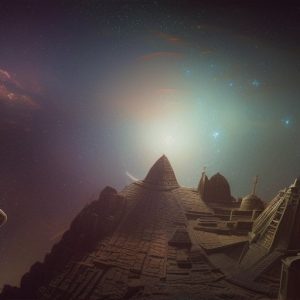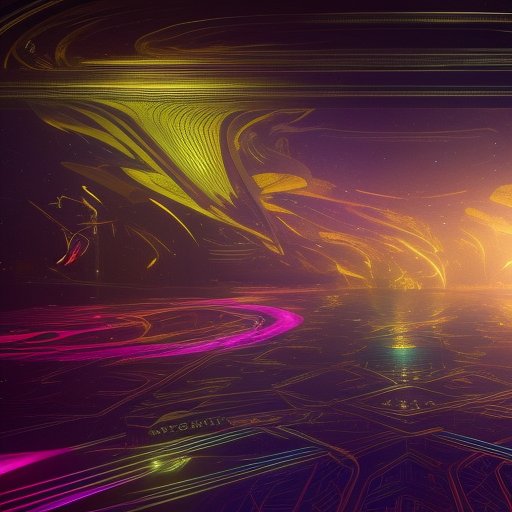
Exploring the fascinating benefit of Ethnoastronomy among ancient and obscure civilizations is a significant topic that requires attention. Observing the sky and recording its movements has been an essential part of many cultures throughout history. Studying these ancient practices can offer insights into the beliefs, perceptions, and values of these civilizations. By delving into the unique ways cultures have understood the cosmos, we can gain a more comprehensive understanding of the universe at large. This article aims to explore the significance of Ethnoastronomy and highlight the contributions of ancient and obscure civilizations in modern-day astronomy.
I. Introduction
Welcome, fellow space travelers, to the fascinating world of Ethnoastronomy! Throughout history, different cultures have looked up at the sky in awe and wonder. These early astronomers recorded the movements of celestial bodies, tracked the stars, and studied the constellations. For some, it was a matter of survival or religious significance, while for others, it was a form of artistic inspiration or philosophical contemplation. Regardless of the reasons, the observation and documentation of the skies have been an important part of many civilizations.

The term Ethnoastronomy refers to the study of the astronomy and related beliefs of different cultures, including traditional and indigenous communities. By examining the astronomy of various civilizations, we can gain insights into the knowledge, values, and traditions of these peoples. Ethnoastronomy helps us to understand how humans have perceived and interacted with the universe, and how these interactions have shaped our cultural evolution.
In this article, we will explore the significance of Ethnoastronomy and examine the contributions of ancient and obscure civilizations in modern-day astronomy. We will delve into the unique ways that different cultures have understood the cosmos and how these ancient beliefs have influenced our modern understanding of the universe. We will also consider the future of Ethnoastronomy, including its advancements, challenges, and opportunities.
So buckle up and prepare for a cosmic journey as we venture across the galaxy and explore the wonders of Ethnoastronomy!
II. Ancient Civilizations and their Understanding of the Cosmos
Ancient civilizations were fascinated and often awed by the skies above. Many early cultures relied on the stars to navigate and track seasonal change. They crafted calendars and used the stars to predict the future or honor gods. For example, the ancient Egyptians believed that the appearances of the star Sirius announced the onset of the annual Nile floods, while the Mayan civilization charted the movements of the planet Venus to predict the future of their society.

In addition to practical uses, astronomy played a significant role in the spiritual lives of many ancient cultures. The Greeks believed that the starry skies were the kingdom of the gods, and each constellation represented a deity or mythological character. The Babylonians and Assyrians, meanwhile, practiced celestial divination, using the movements of the stars to foretell the fates of kings and empires.
Other exciting astronomical discoveries have been made recently about ancient cultures, such as the Caral civilization in Peru, who built stone observatories to track the movement of the sun, moon, and stars. And of course, no discussion of ancient astronomy can leave out the remarkable wonders of Stonehenge, England. The megalithic monument was constructed 5000 years ago with stones aligned to capture the solstices and equinoxes.
By studying the astronomy of ancient civilizations, we can gain valuable insights into their way of life, as well as their philosophical and religious beliefs. These discoveries help us to comprehend how our ancestors viewed the universe and how it differed from our modern perspective. To be sure, these significant findings give us pause and reminded us that there is so much we have yet to discover and comprehend about the cosmos.
III. Obscure Civilizations and Their Unique Astronomy
As we continue our cosmic journey, we must not overlook the contributions of obscure civilizations to the field of Ethnoastronomy. These civilizations, often overlooked in traditional history books, have left their stamp on our understanding of the cosmos with their unique and fascinating approaches to astronomy.

Take, for example, the people of the African Khoisan culture, who have a comprehensive understanding of the star constellations above them. They utilize the knowledge to plan their travels and to track the growth cycles of various plants. In South America, the Inca civilization developed a complex system of astronomy that informed their religion, agriculture, and architecture. The Incas even engineered their buildings to align with the movements of the sun and the stars!
Moving even further east, the Polynesian society developed a navigation system that relied on the stars, waves, wind, and ocean currents. This complex method of navigation allowed them to traverse the vast Pacific Ocean and explore new lands.
But it’s not just these cultures that have made significant contributions to Ethnoastronomy. Even ancient European civilizations, such as the Greeks and Romans, had a rich history of astronomy that influenced their mythology, religion, and politics.
The ways of these civilizations were often forgotten or dismissed, but their unique insights and knowledge can help us to better understand the world and the universe around us. We must acknowledge the value of the knowledge and wisdom gained from these civilizations and integrate it into our modern understanding of the cosmos.
So, let us revel in the fascinating insights gained from the obscure and ancient cultures that have helped shape our understanding of the cosmos.
IV. Astronomy in Modern Times
As we embark on our journey through modern astronomy, it becomes clear that Ethnoastronomy has a profound impact on contemporary scientific research. Today’s scientists draw inspiration from the astronomy of ancient and obscure civilizations, and incorporate traditional knowledge into their astronomical observations.

One example of how Ethnoastronomy has influenced modern astronomy is the recent discovery of a new star system by Hawaiian astronomers. They used traditional Polynesian navigation techniques and the knowledge of certain Hawaiian constellations to locate a rare and distant star formation. This discovery highlights the potential benefits of noting the traditional knowledge of different civilizations.
There is also a growing recognition of the importance of indigenous knowledge in the study of the cosmos. Many indigenous communities around the world have their own understanding of the stars, passed down through generations. Astronomers are now working with these communities to learn more about their astronomical knowledge and incorporate them into modern research.
Furthermore, the study of Ethnoastronomy sheds light on the historical and cultural contexts that shaped the astronomical knowledge of different civilizations. It helps us to understand how cultural beliefs and practices influenced astronomy and how astronomical knowledge evolved over time. By exploring these ancient and obscure practices, we can better understand our place in the universe and how our understanding has evolved.
V. The Future of Ethnoastronomy
As we embark upon a new era of exploring the unknown, Ethnoastronomy presents exciting opportunities for discovering the cosmos like never before. Advancements in technology and computing power have allowed us to explore outer space with greater resolution, sensitivity, and accuracy. The study of ancient civilizations’ astronomy can help to develop new ways to observe and understand the universe.

However, Ethnoastronomy also faces its fair share of challenges. The construction of massive telescopes or ground observatories could impact sacred sites or areas of cultural importance. Additionally, modern science must be respectful of different cultures and their traditional knowledge while using it in a beneficial and constructive manner.
Another challenge that Ethnoastronomy may face is the impact of climate change, which is already changing cultural landscapes and traditions in many parts of the world. Rising sea levels, severe weather events, and changes in agricultural patterns could significantly impact the human relationship with the cosmos.
Despite these challenges, Ethnoastronomy presents a vast field of opportunities for exploring the universe’s mysteries. The study of ancient astronomy can contribute to our understanding of other planets, the formation of stars and galaxies, and even the origins of life itself. By combining traditional and modern knowledge, we can gain a broader perspective on the universe and new insights into the meaning of our existence.
VI. Conclusion
As we wrap up our cosmic journey into Ethnoastronomy, let us reflect upon the value of exploring the practices and beliefs of ancient and obscure civilizations. By studying these ancient cultures, we gain a more comprehensive understanding of the universe at large. We appreciate the diverse ways that human beings have looked to the sky and used their knowledge of the cosmos to shape their lives, beliefs, and cultures.

Ethnoastronomy has also contributed significantly to modern-day astronomy. It has helped us to identify new celestial objects, astronomical phenomena and improve our understanding of ancient star maps. Additionally, this field has enriched our understanding of astronomy in other cultures, such as in traditional communities, contemporary disciplines, and indigenous cultures. As we bridge the gap between science and tradition, we advance holistic and diverse understandings of astronomy and our place in the universe.
With the rapid advancements of technology, Ethnoastronomy faces both opportunities and challenges. On the one hand, the inclusion of under-represented cultures can inspire new discoveries and foster new collaborations. However, the impact of technological advancements and globalization has contributed to the erosion of ancient cultures and knowledge systems. As we invest in scientific investigations, it’s important to be mindful of the ethical and cultural implications of our actions.
Exploring Ethnoastronomy reignites our sense of curiosity about the universe and helps us appreciate the beauty and diversity of our planet’s cultures. By engaging in the study of traditional, indigenous, and alternative ways of understanding the cosmos, we enrich our global heritage and foster a more profound appreciation for the world beyond our planet. Ethnoastronomy encourages us to see our connection to the universe and motivates us to use our understanding of the universe to promote sustainability, social equality, and cultural diversity.
So, let us continue to journey beyond the stars, embracing the Ethnoastronomy that animates our past, contributes to our present, and inspires our future. The lessons we learn from our ancestors, their contributions to astronomy and their approach towards it will always carry great historical importance.






